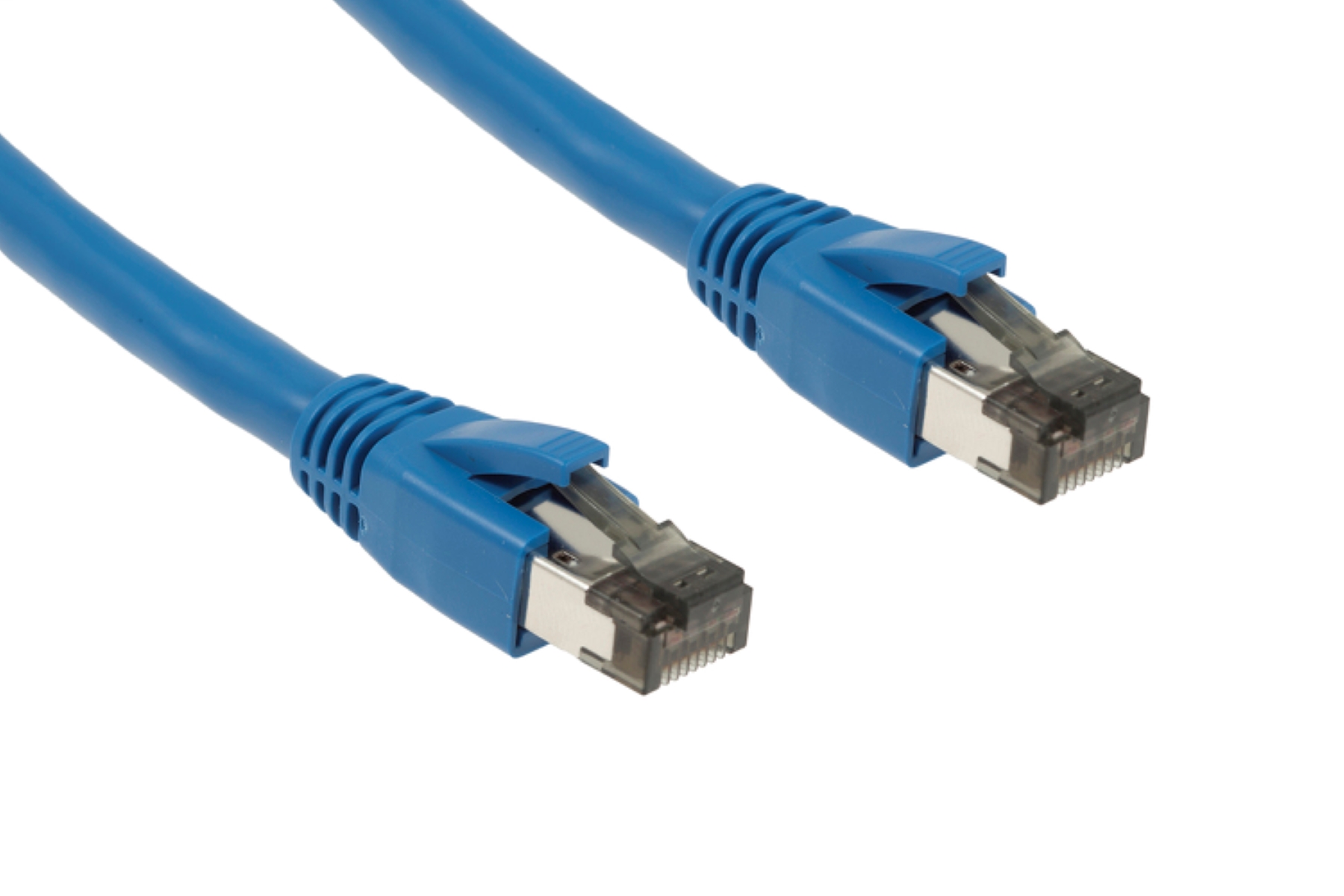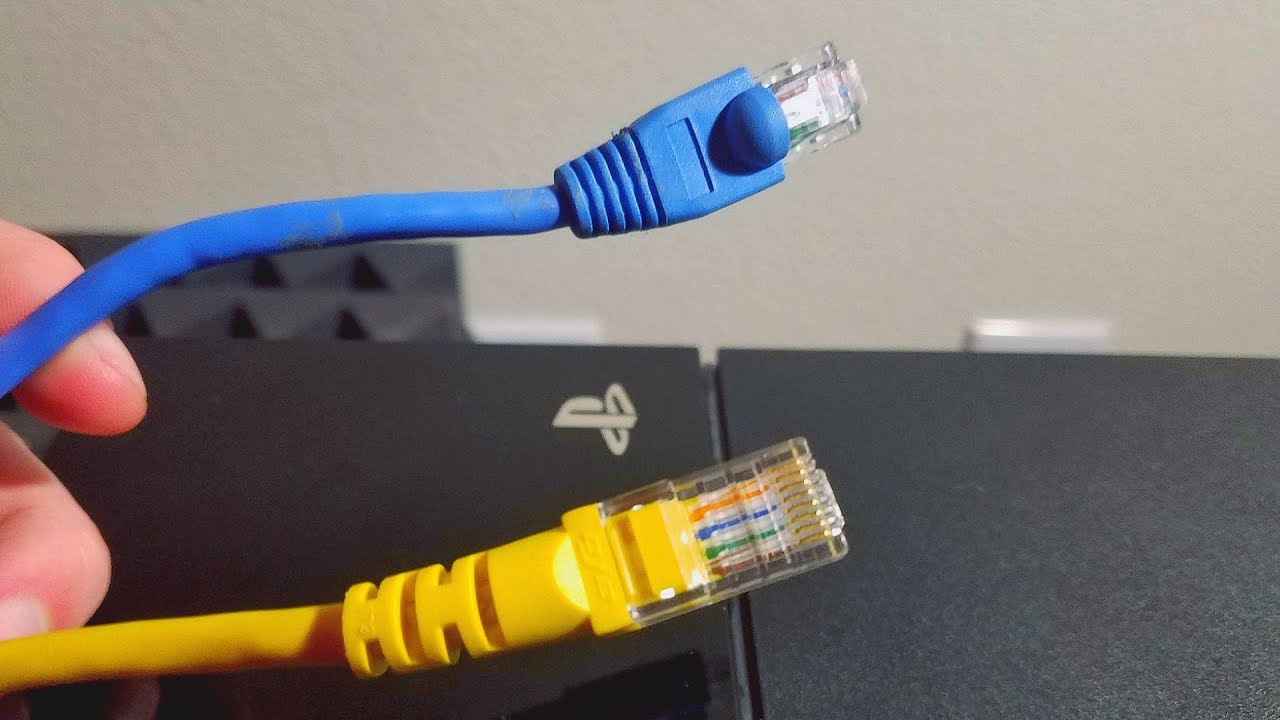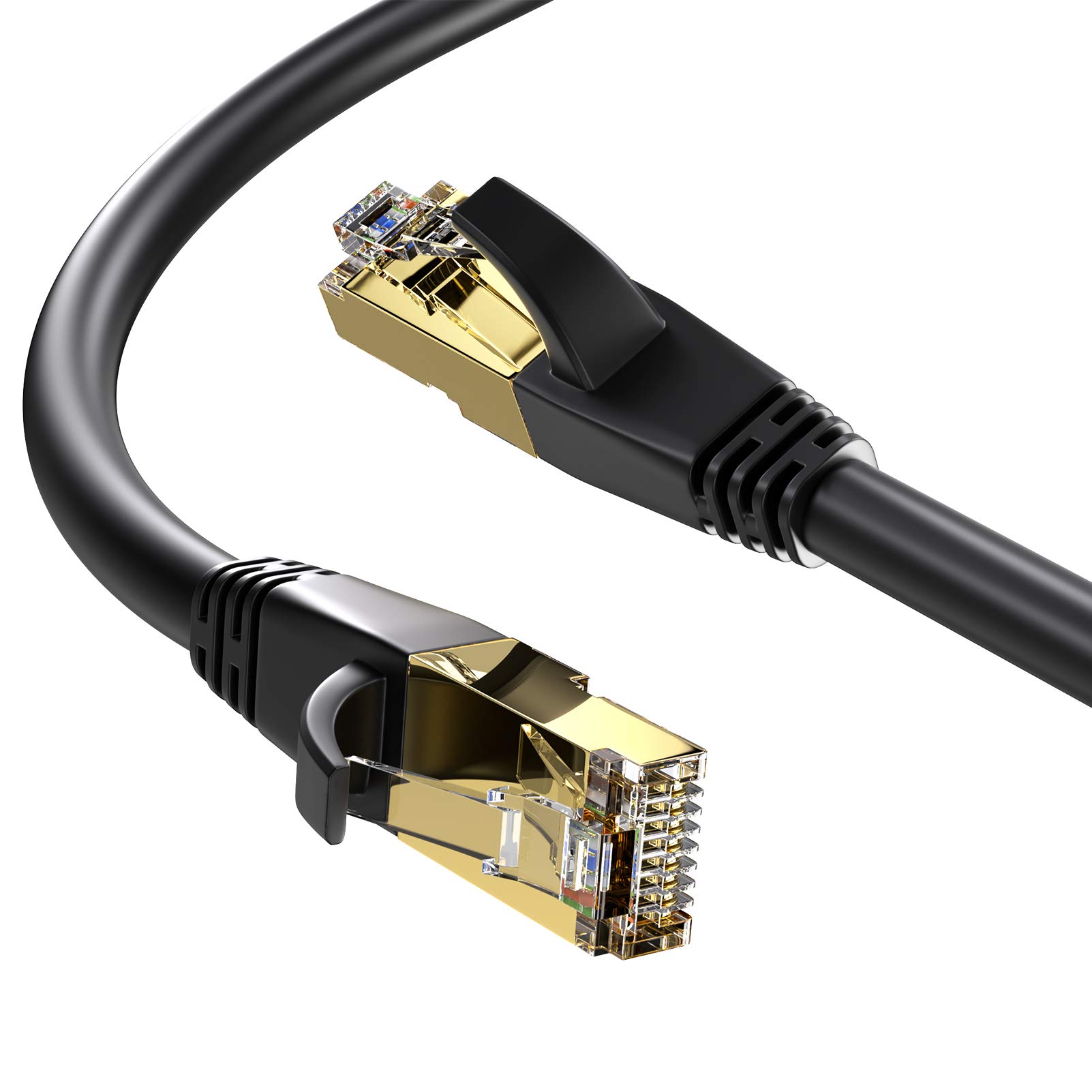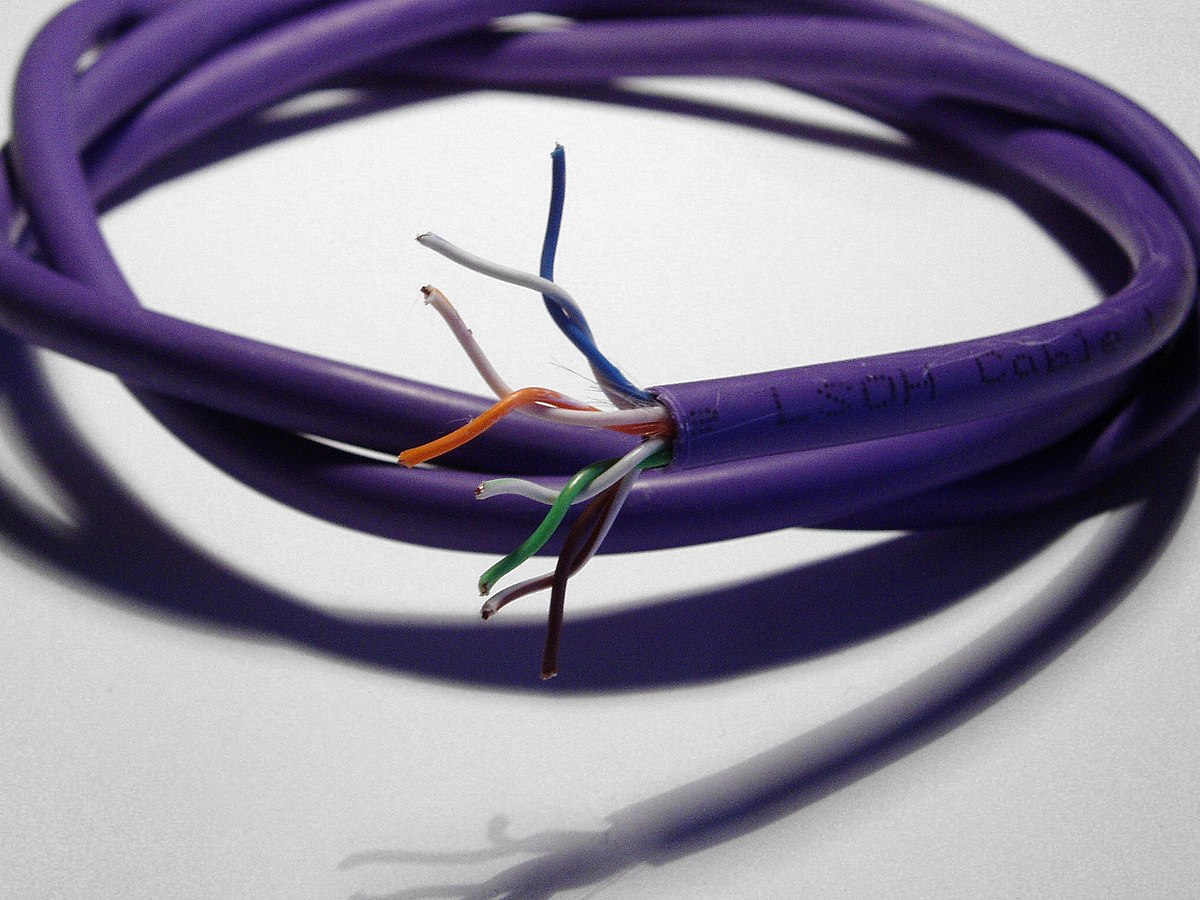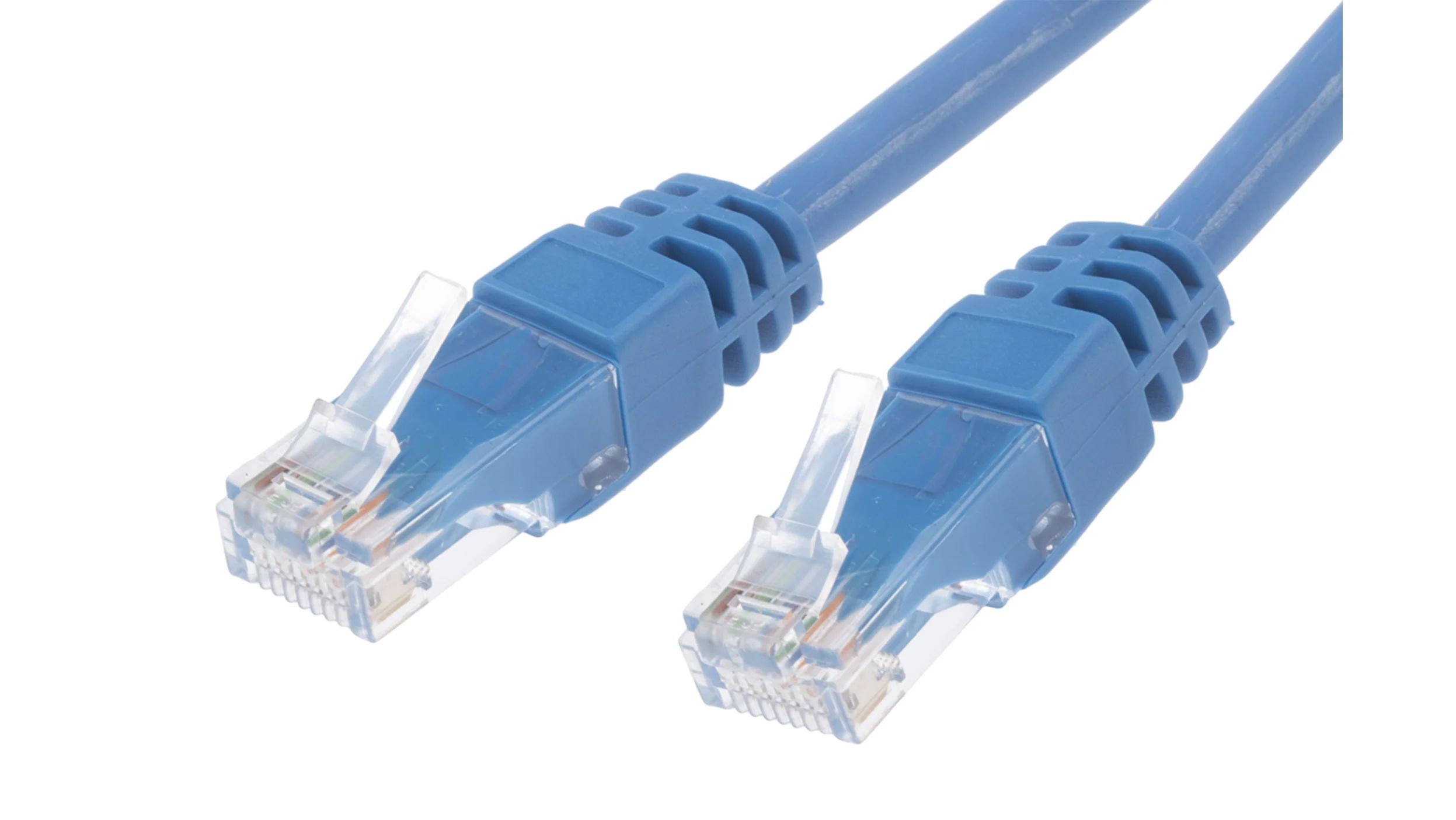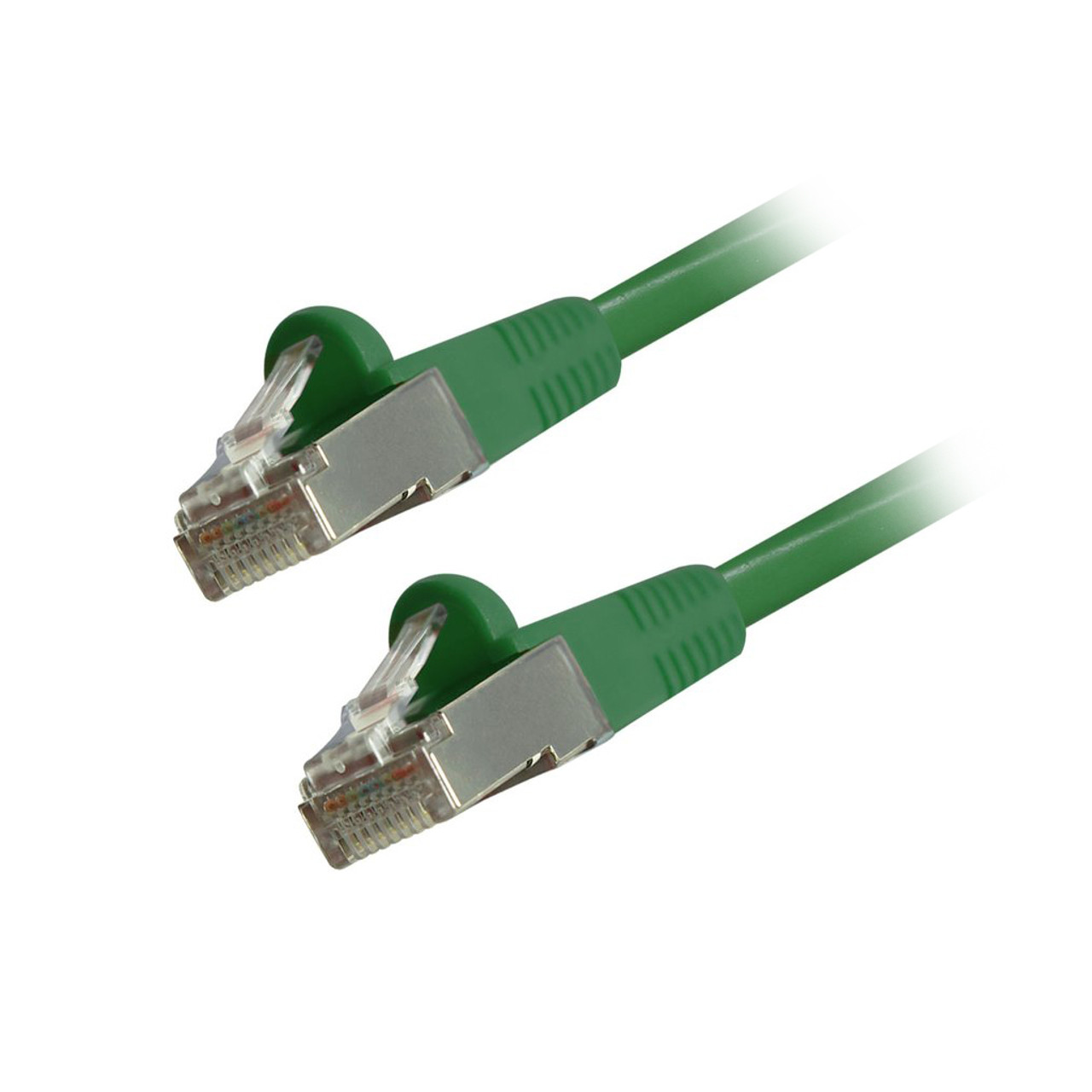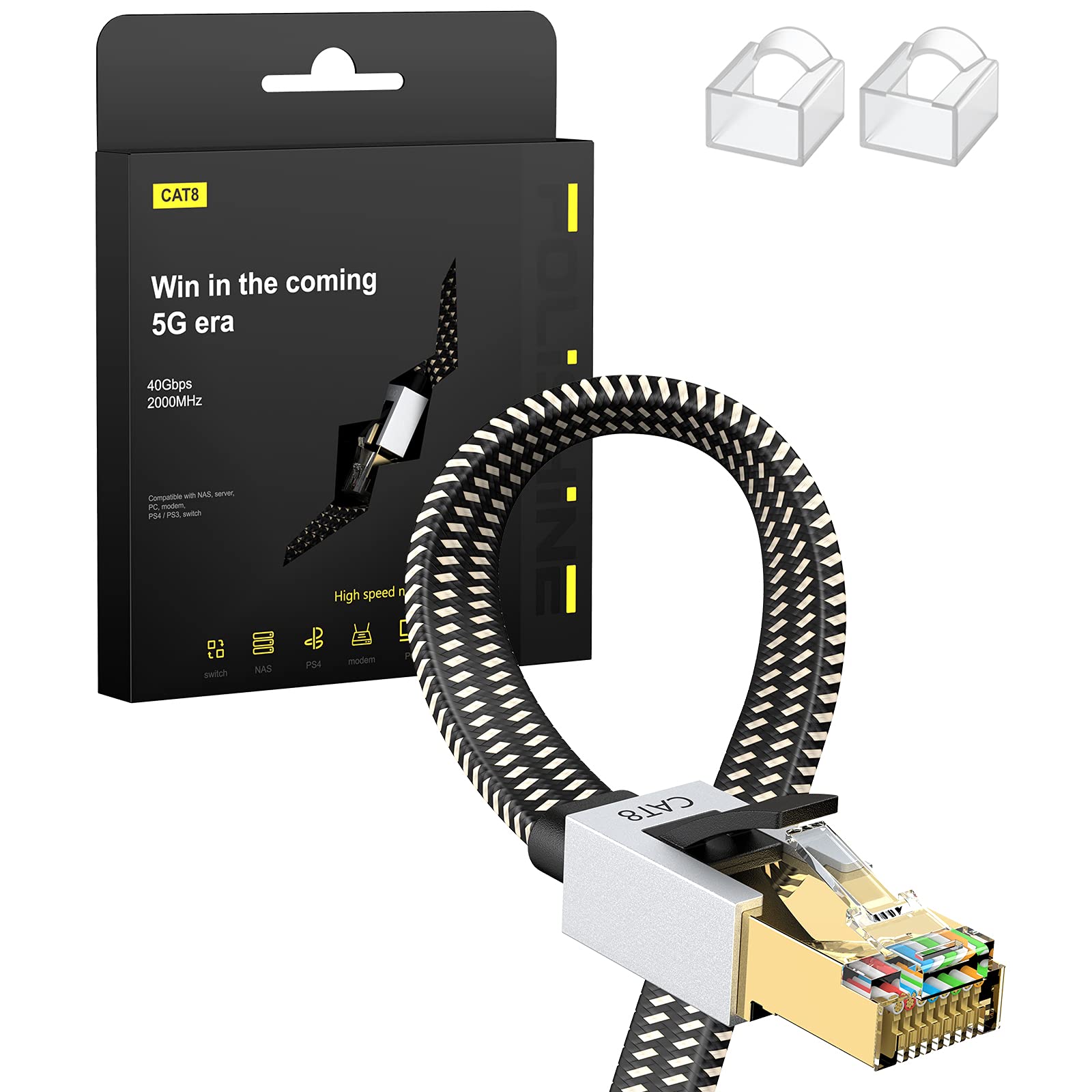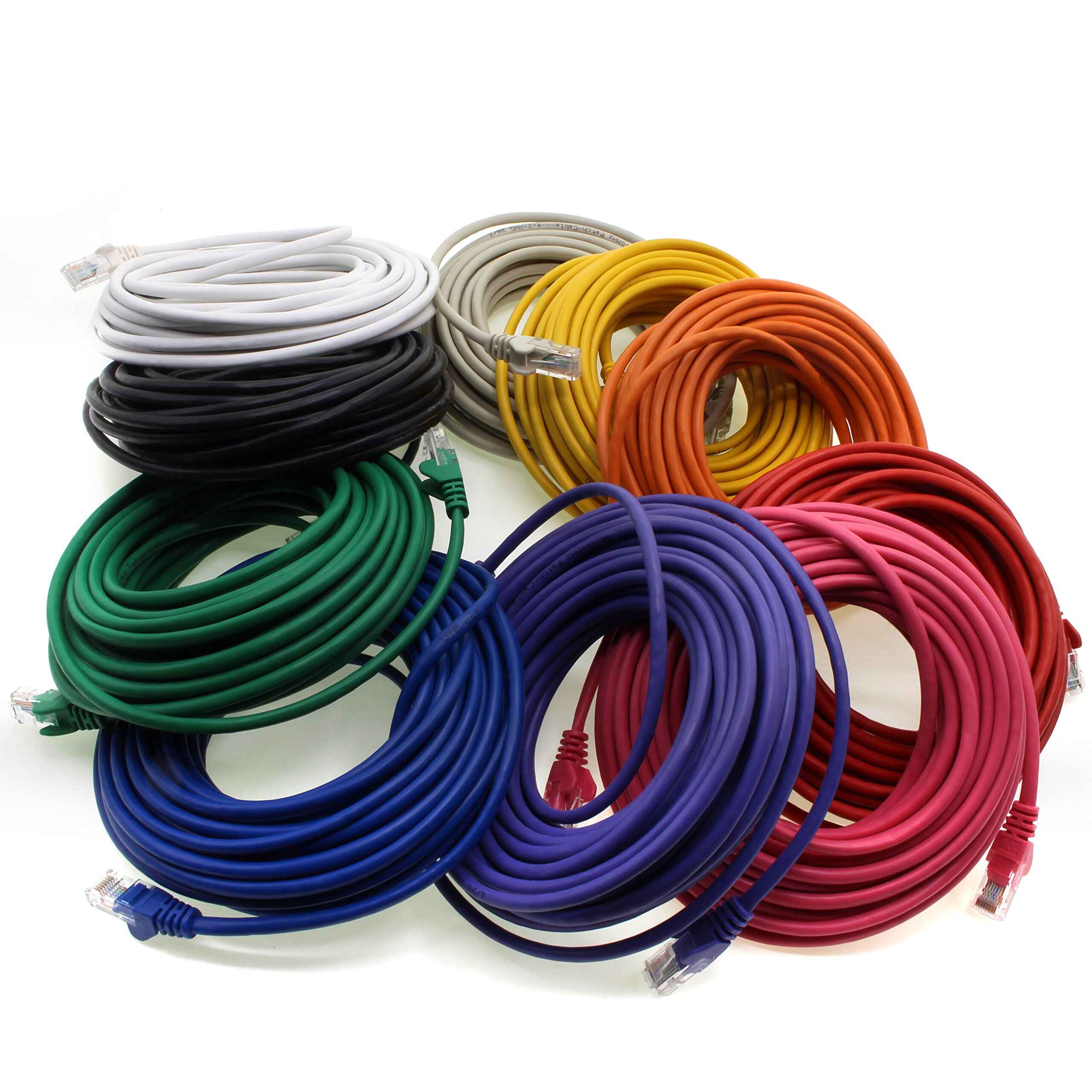Introduction
Ethernet cables are essential components for establishing network connections in both residential and commercial settings. They are responsible for transmitting data signals between devices such as computers, routers, and switches. Over the years, different types of Ethernet cables have been developed to meet increasing data transfer demands and technological advancements.
In this article, we will explore the difference between two popular types of Ethernet cables, Cat6 and Cat8. Understanding the distinctions between these cables is crucial for choosing the right one for your specific network requirements.
Before diving into the details, let’s briefly review the history and basics of Ethernet cables. The term “Ethernet” refers to a family of wired networking technologies that were initially developed in the 1970s by Xerox, Intel, and Digital Equipment Corporation (DEC). These cables were primarily used for local area networks (LAN) and provided a fast and reliable way to connect computers and other devices.
Since then, Ethernet cables have undergone significant advancements to keep up with the ever-increasing need for faster data transfer speeds. The development of Cat6 and Cat8 cables is a result of this constant evolution.
Cat6, short for Category 6, has been a popular choice for many years. It is an enhanced version of its predecessor, Cat5e, and offers improved performance in terms of speed and reduced interference. On the other hand, Cat8 is a newer cable that surpasses the capabilities of previous generations, providing even faster speeds and enhanced shielding. Understanding the differences between these two options will help you determine which one is best suited for your specific networking needs.
History and Basics of Ethernet Cables
The history of Ethernet cables traces back to the early days of computer networking, where the need for efficient data transmission between devices became paramount. In the 1970s, Xerox, Intel, and DEC collaborated to develop Ethernet as a standardized networking technology.
Originally, Ethernet cables used coaxial cables, known as thicknet and thinnet, to transmit data. However, as technology progressed, these cables proved to be limited in terms of bandwidth and distance capabilities.
In the 1980s, a new type of cable, known as twisted pair cable, replaced coaxial cables. Twisted pair cables consisted of four pairs of copper wires twisted together to reduce electromagnetic interference. This innovation paved the way for faster and more reliable network connections.
With time, Ethernet cables evolved further to meet the growing demands of network users. Cat5, introduced in the 1990s, offered a significant improvement over previous cable versions, supporting speeds up to 100 Mbps. Later, Cat5e, with the “e” standing for enhanced, provided better performance by reducing crosstalk and improving signal quality.
Subsequently, Cat6 cables were introduced to cater to the need for higher bandwidth and faster speeds. These cables feature tighter twists and improved insulation to minimize interference and support speeds of up to 10 Gbps.
The latest addition to the Ethernet cable family is Cat8, designed to meet the demands of modern networks with even higher speeds and improved shielding. Cat8 cables support data rates of up to 40 Gbps over short distances, making them ideal for applications that require extremely fast and reliable connections.
Today, Ethernet cables are widely used in various industries and settings, including residential, commercial, and data center environments. They are the backbone of modern networking, enabling efficient communication and data transfer between devices.
Understanding the history and basics of Ethernet cables is crucial for choosing the right type of cable for your network infrastructure. In the following sections, we will delve into the differences between Cat6 and Cat8 cables, exploring their speeds, distances, shielding, and cost, as well as their practical applications.
What is Cat6 Ethernet Cable?
Cat6, short for Category 6, is an Ethernet cable that has become widely used in networking installations. It is an improved version of its predecessor, Cat5e, and offers enhanced performance and capabilities.
One of the key advancements of Cat6 cables is its ability to support faster data transfer speeds. While Cat5e cables can handle speeds up to 1 Gbps, Cat6 cables can transmit data at speeds up to 10 Gbps. This increase in speed makes Cat6 cables ideal for high-bandwidth applications such as video streaming, online gaming, and large file transfers.
Moreover, Cat6 cables are constructed with tighter twists in the twisted pair copper wires, which helps to reduce crosstalk and electromagnetic interference. This enhanced shielding ensures a more reliable and stable network connection, especially in environments with high levels of electrical noise.
When it comes to distances, Cat6 cables can effectively transmit data up to 55 meters (180 feet) without any loss of signal quality. This distance can be extended by using Ethernet switches or repeaters to boost the signal strength.
In addition to its speed and reliability, Cat6 cables are backward compatible, which means they can be used with devices that support lower-rated cables such as Cat5e and Cat5. However, it is important to note that when connecting a Cat6 cable to a lower-rated device, the connection will operate at the maximum speed supported by the lower-rated cable.
In terms of cost, Cat6 cables are slightly more expensive than Cat5e cables. However, considering the improved performance and future-proofing capabilities, the additional investment is often worthwhile, especially for networks that require high-speed data transmission.
The practical applications of Cat6 cables are vast. They are commonly used in both residential and commercial settings to establish reliable and high-speed network connections. Cat6 cables are ideal for home networks, small businesses, and enterprises that require seamless streaming, online gaming, video conferencing, and other data-intensive activities.
In summary, Cat6 Ethernet cables are an upgraded version of Cat5e cables, offering faster speeds, improved shielding, and reduced interference. They are well-suited for high-bandwidth applications and provide reliable network connections in various settings. However, in environments where even higher speeds and superior shielding are required, Cat8 cables might be a more suitable choice, which we will explore in the next section.
What is Cat8 Ethernet Cable?
Cat8, also known as Category 8, is the latest addition to the Ethernet cable family. It is designed to provide ultra-fast data transfer speeds and enhanced performance, surpassing the capabilities of previous cable generations.
One of the standout features of Cat8 cables is their ability to support blazing-fast speeds. With data rates of up to 40 Gbps, Cat8 cables are ideal for applications that require incredibly high bandwidth, such as data centers, server rooms, and other demanding networking environments.
The impressive speed of Cat8 cables is achieved through the use of advanced cable construction techniques. It utilizes shielding technology, including individually shielded pairs and an overall shield, to minimize crosstalk and external interference effectively. This shielding leads to a more reliable and stable network connection, even in environments with high levels of electrical noise.
Furthermore, Cat8 cables are designed to transmit data over short distances. While Cat6 cables can effectively transmit data up to 55 meters, Cat8 cables can maintain the same speeds over distances of just 30 meters (98 feet). This makes Cat8 ideal for localized network connections, such as within a rack or between nearby devices.
It is important to note that due to the higher frequency used by Cat8 cables, there may be limitations on their use in older networking equipment or longer distances. Therefore, Cat8 cables are typically recommended for new installations or upgrading existing networks with compatible devices.
Considering their advanced capabilities, Cat8 cables tend to be more expensive compared to Cat6 and other lower-category cables. However, the investment is justified for networks that demand extremely high speeds and reliable performance.
When it comes to practical applications, Cat8 cables excel in environments that require ultra-fast data transfer, such as data centers, server rooms, and high-performance computing facilities. They are also suitable for professionals who rely on bandwidth-intensive tasks like video editing, 3D rendering, and scientific simulations.
In summary, Cat8 Ethernet cables are the newest and fastest addition to the Ethernet cable family. With their ability to support speeds up to 40 Gbps and enhanced shielding capabilities, Cat8 cables are a top choice for high-bandwidth applications and specialized networking environments that demand unparalleled performance.
Comparison of Cat6 and Cat8 Ethernet Cables
When deciding between Cat6 and Cat8 Ethernet cables, it’s essential to understand their differences in terms of speed, distance, shielding, and cost. Let’s compare these two cable types to help you make an informed choice:
Speed and Bandwidth: Cat6 cables can support speeds of up to 10 Gbps, while Cat8 cables can handle speeds up to 40 Gbps. This significant difference in bandwidth makes Cat8 cables the clear winner for applications that require incredibly fast data transfer.
Distance: Cat6 cables can transmit data up to 55 meters without any signal loss, while Cat8 cables are limited to shorter distances of 30 meters. If you require high speeds over shorter distances, Cat8 is the optimal choice.
Shielding and Interference: Cat6 cables offer standard shielding to minimize crosstalk and electromagnetic interference. On the other hand, Cat8 cables provide advanced shielding, including individually shielded pairs and an overall shield, ensuring superior protection against external noise and interference. Cat8 cables are best suited for environments with high electrical noise levels.
Cost: Cat6 cables are generally more affordable compared to Cat8 cables. The higher price of Cat8 cables reflects their advanced technology and capabilities.
Based on these factors, Cat6 cables are suitable for most residential and small business networks. They provide fast speeds and reliable performance for everyday internet usage, streaming, gaming, and file transfers. However, if you have demanding networking needs, such as data centers or server rooms, where high bandwidth and ultra-fast speeds are critical, Cat8 cables are the superior choice.
It’s worth noting that both Cat6 and Cat8 cables are backward compatible, so they can be used with devices that support lower-rated cables. However, the maximum speed will be limited by the lower-rated cable in such connections.
In summary, Cat6 and Cat8 Ethernet cables offer distinct advantages depending on your networking requirements. Cat6 is a reliable choice for standard use cases, while Cat8 provides exceptional performance for high-demand environments. Consider your specific needs and budget to determine which cable type is the best fit for your network infrastructure.
Speed and Bandwidth
When it comes to speed and bandwidth, Cat6 and Cat8 Ethernet cables offer distinct capabilities. Understanding the differences in speed and bandwidth is crucial in determining which cable is best suited for your networking requirements.
Cat6 cables are designed to support speeds up to 10 Gbps (Gigabits per second). This significant improvement over previous cable generations, such as Cat5e, makes Cat6 cables ideal for applications that demand high data transfer rates. With speeds of 10 Gbps, Cat6 cables can handle bandwidth-intensive tasks like HD video streaming, online gaming, and large file transfers with ease.
On the other hand, Cat8 cables take speed and bandwidth to a whole new level. These cables can support speeds up to 40 Gbps, a fourfold increase compared to Cat6 cables. With their unparalleled speed, Cat8 cables are well-suited for data centers, server rooms, and other high-performance networking environments where ultra-fast and reliable connections are crucial. The higher bandwidth provided by Cat8 cables allows for seamless streaming of 4K and even 8K video content, as well as lightning-fast data transfers.
It’s important to note that the maximum speeds stated for Cat6 and Cat8 cables are achieved under optimal conditions. Factors such as network congestion, the capabilities of connected devices, and the quality of networking equipment can affect actual speeds. Additionally, the speed of the connection is also limited by the speed capabilities of the devices being used.
When considering which cable to use, it’s essential to evaluate your specific networking needs and the devices you will be connecting. If you require high-performance connectivity for standard home or small business applications, Cat6 cables will likely fulfill your requirements. However, if you’re dealing with data-intensive tasks, heavy network traffic, or demanding networking environments, Cat8 cables offer the necessary speed and bandwidth to handle these challenges.
Ultimately, the decision between Cat6 and Cat8 cables comes down to the specific speed and bandwidth requirements of your network. By understanding the capabilities of each cable type, you can make an informed choice that ensures optimal performance and meets your networking needs.
Distance
The distance over which Ethernet cables can successfully transmit data is an important consideration when selecting the right cable for your networking needs. Both Cat6 and Cat8 cables have limitations in terms of the distances they can effectively cover.
Cat6 cables are capable of transmitting data reliably up to a distance of 55 meters (180 feet) without any signal loss or degradation. This distance is often sufficient for most residential and small business setups. However, it’s important to note that factors such as the quality of the cable and the level of electrical interference in the environment can impact maximum distance capabilities.
On the other hand, Cat8 cables are designed for shorter distance transmissions. They can maintain their maximum speeds over a distance of 30 meters (98 feet). While this might seem like a significant reduction compared to Cat6 cables, Cat8’s strength lies in its ability to provide ultra-fast speeds over short distances. This makes Cat8 cables ideal for localized network connections, such as within a rack or between nearby devices in data centers or server rooms.
When planning your network infrastructure, it’s important to keep in mind the layout and physical limitations of your environment. If you require high-speed connections over longer distances, Cat6 cables may be more suitable. On the other hand, if your focus is on achieving maximum speeds within a limited range, Cat8 cables offer the necessary performance.
Expanding the reach of Ethernet connections beyond the defined distance limitations can be achieved by using additional networking devices such as Ethernet switches or repeaters. These devices help boost the signal and extend the maximum distance that can be covered. However, it’s essential to ensure that the additional equipment is compatible with the specific cable type being used.
In summary, when it comes to distance capabilities, Cat6 cables have the advantage of covering longer distances without loss of signal quality, making them suitable for most residential and small business setups. Cat8 cables, on the other hand, are designed for shorter distance transmissions but offer ultra-fast speeds over those limited distances, making them perfect for localized connections in data centers and server rooms. Consider your specific network layout and requirement to determine which cable type is the best fit for your distance needs.
Shielding and Interference
Shielding and interference are crucial factors to consider when choosing an Ethernet cable, as they directly impact the reliability and stability of your network connection. Both Cat6 and Cat8 cables offer different levels of shielding to minimize the effects of crosstalk and external interference.
Cat6 cables feature standard shielding, known as “unshielded twisted pair” (UTP) construction. The individual twisted pairs of copper wires inside the cable are not individually shielded but are twisted together to minimize electromagnetic interference. The outer jacket provides some protection against external interference. While this shielding is effective in most residential and small business environments, it may be susceptible to interference from nearby electrical cables or sources of electromagnetic radiation.
Cat8 cables, however, offer advanced and robust shielding to combat interference. They use individually shielded pairs (F/UTP or S/FTP) and an overall shield (S/FTP or F/FTP). This shielding helps to significantly reduce crosstalk and offers superior protection against external sources of electromagnetic interference. Cat8 cables are suitable for environments with high levels of electrical noise, such as data centers or industrial settings.
With the advanced shielding of Cat8 cables, they provide more reliable and stable connections than Cat6 cables, especially in environments with a significant presence of electrical devices or sources of interference. The shielding helps prevent signal degradation and cross-interference between adjacent cables, resulting in clearer and more consistent data transmission.
It’s important to note that while Cat6 cables provide sufficient shielding for most common network setups, Cat8 cables go above and beyond in terms of shielding capabilities. If your network operates in a high-interference environment or you require the utmost stability and reliability, Cat8 cables should be considered.
Moreover, the shielding of both Cat6 and Cat8 cables also helps protect sensitive data from external eavesdropping or unauthorized access. This is particularly important in environments where data security is a primary concern, such as financial institutions or government organizations.
In summary, Cat6 cables offer standard shielding that is suitable for most residential and small business environments, providing reliable performance against common sources of interference. On the other hand, Cat8 cables provide advanced shielding for maximum protection against external interference, making them ideal for environments with high levels of electrical noise. Consider the level of interference in your operating environment to determine the appropriate level of shielding required for your network.
Cost
The cost of Ethernet cables is an important consideration for any network installation, as it can impact overall budget and expenditure. When comparing Cat6 and Cat8 cables, there are differences in price due to the varying technologies and performance capabilities.
Cat6 cables are generally more affordable compared to Cat8 cables. This price difference is primarily because Cat6 cables have been in the market for a longer time and are considered the standard for most residential and small business networking needs. The manufacturing process and materials used for Cat6 cables have become more streamlined and cost-effective over time, resulting in a lower price point.
On the other hand, Cat8 cables are newer and come with advanced features and capabilities. This newer technology, along with the higher performance and improved shielding, contributes to a higher price tag compared to Cat6 cables. The additional investment in Cat8 cables may be justified if you require ultra-fast speeds, robust shielding against interference, and are operating in a high-demand networking environment.
When deciding between Cat6 and Cat8 cables, it’s crucial to balance your performance requirements with your budget. Consider the specific networking needs of your environment and determine if the benefits of Cat8 cables, such as faster speeds and enhanced shielding, outweigh the higher cost.
Additionally, it’s important to note that while Cat6 cables may be more cost-effective, they still offer reliable performance for most common network setups. If your network does not require the extreme performance offered by Cat8 cables, Cat6 cables can provide a more budget-friendly option without compromising too much on speed and stability.
Ultimately, the cost of Ethernet cables should be evaluated in conjunction with the specific requirements and intended use of your network. It’s advisable to consider not just the initial cost of the cables themselves but also the long-term benefits and savings that may arise from choosing the right cable type for your networking needs.
In summary, Cat6 cables are generally more affordable compared to Cat8 cables due to their longer presence in the market and standardization in many network installations. However, if your network demands ultra-fast speeds and robust shielding, the higher cost of Cat8 cables may be justifiable. Consider your budget and performance requirements to determine the appropriate cable type for your network infrastructure.
Practical Applications
Both Cat6 and Cat8 Ethernet cables have practical applications in various settings, depending on the specific networking requirements and demands of the environment. Let’s explore the practical applications of these cable types:
Cat6: Cat6 cables are commonly used in residential, small business, and enterprise environments where reliable and high-speed network connections are required. Some practical applications of Cat6 cables include:
- Home Networks: Cat6 cables are ideal for home networks, enabling seamless streaming of multimedia content, online gaming, and file sharing.
- Small Businesses: Cat6 cables provide fast and reliable connectivity for small office networks, supporting the needs of multiple users and facilitating efficient data transfer.
- Conferencing and Collaboration: Cat6 cables offer stable connections for video conferencing, online collaboration, and remote communication in business environments.
- Education: Cat6 cables are used in educational institutions to provide high-speed internet access in classrooms, computer labs, and campus-wide networks.
Cat8: Cat8 cables are designed for specialized applications that demand ultra-fast speeds and enhanced shielding. Some practical applications of Cat8 cables include:
- Data Centers: Cat8 cables are well-suited for data centers, where high bandwidth and reliable connectivity are essential for processing and transmitting large volumes of data.
- Server Rooms: Cat8 cables provide high-performance connections between servers, switches, and storage devices, ensuring efficient and low-latency data transfer.
- High-Performance Computing: Cat8 cables are used in environments where extensive computational power and rapid data access are crucial, such as scientific research, simulations, and analytics.
- Media Production: Cat8 cables support the transmission of high-resolution video, audio, and multimedia content in professional media production environments, ensuring smooth streaming and editing processes.
It’s important to note that while Cat8 cables offer superior performance for specialized applications, Cat6 cables can still fulfill the requirements of most residential and small business networks. The choice of cable type should align with the specific networking demands, budget, and future scalability considerations.
Ultimately, the practical applications of Cat6 and Cat8 cables are driven by the need for reliable and high-speed network connections in various settings. Assessing your specific networking requirements will help determine which cable type is the most suitable for your practical applications.
Conclusion
Choosing the right Ethernet cable is essential for establishing reliable and high-performance network connections. In this article, we explored the differences between Cat6 and Cat8 Ethernet cables in terms of speed, distance, shielding, cost, and practical applications.
Cat6 cables, with their 10 Gbps speeds and reliable performance, are suitable for most residential and small business networks. They offer a balance between performance and affordability, making them a popular choice for everyday internet usage, streaming, gaming, and file transfers.
On the other hand, Cat8 cables provide unparalleled speed and robust shielding capabilities. With speeds up to 40 Gbps and advanced shielding technology, Cat8 cables are ideal for demanding networking environments such as data centers, server rooms, and high-performance computing facilities. They excel in applications that require ultra-fast data transfer and enhanced protection against electromagnetic interference.
It’s important to consider factors such as distance requirements, interference levels, budget, and practical applications when selecting the appropriate cable type. If longer distances or standard networking needs are the focus, Cat6 cables offer reliable performance at a more affordable price point. However, if you require ultra-fast speeds, superior shielding, and have specific high-demand networking requirements, Cat8 cables are the recommended choice despite their higher cost.
Ultimately, the decision between Cat6 and Cat8 Ethernet cables depends on your specific networking needs. Evaluating the speed, distance, shielding, cost, and practical applications will guide you in selecting the ideal cable type that fits your requirements and budget.
By understanding the differences between Cat6 and Cat8 Ethernet cables, you can make an informed decision that ensures optimal performance, reliable connectivity, and future scalability for your network infrastructure.







